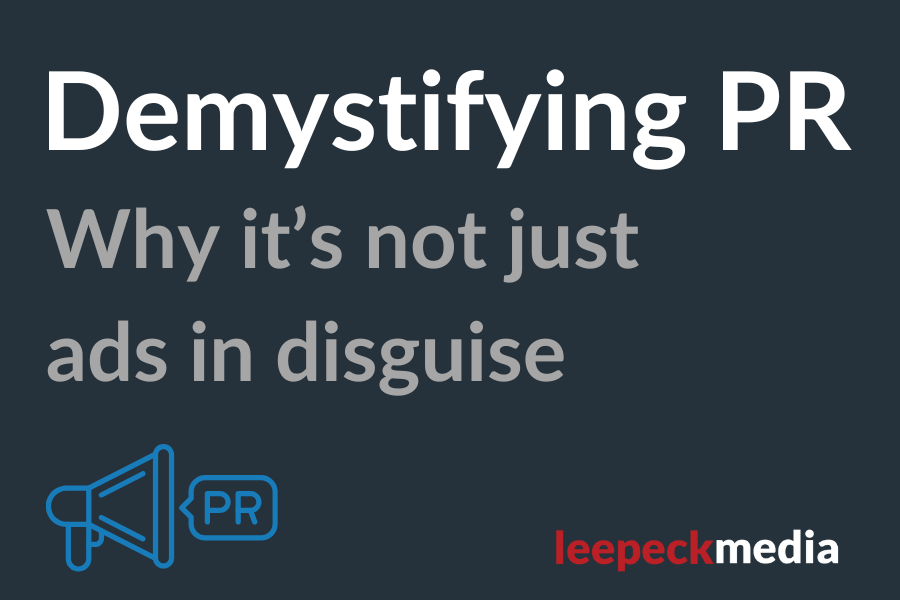Why PR Isn’t Just Ads in Disguise: A Beginner’s Guide
In the world of public relations, there’s a lot of jargon, process and strategy that can feel like a mystery to those outside the field – or even to some within it. And that’s okay! PR isn’t always intuitive, and understanding its nuances can take time.
At Leepeckmedia, we often work with clients, including heads of communications, who admit they don’t fully understand how PR works. And here’s the thing: it’s not their fault. PR has its own unique set of rules, and unless someone has worked in the industry, it’s unlikely they’ll know all the details.
So, in the spirit of collaboration and education, let’s break down some common PR misconceptions and explain why we do things the way we do.
1. Press Releases Are Not Articles
A press release is a tool, not a finished product. Think of it as a pitch or a blueprint that provides journalists with the key information they need to build a story.
While press releases often contain polished language and quotes, they are rarely published word-for-word. Journalists use them as a starting point, fact-checking, editing, and adding their unique perspective.
Why does this matter? Because a well-written press release increases the chances of coverage, but it’s not the final say on how your story will appear.
2. We Don’t Pay for Coverage
One of the biggest misunderstandings we encounter is the assumption that media coverage can be bought. While advertising space is sold (think banners, sponsored posts or paid editorials), traditional PR relies on earned media.
Earned media is exactly what it sounds like: earned. It’s the result of crafting a compelling story that’s newsworthy enough for a journalist to cover on its own merit. And yes, that’s harder to achieve, but it’s also far more valuable because it comes with the credibility of being featured organically.
3. Why We Write Press Releases the Way We Do
Have you ever wondered why press releases are so concise and structured? It’s because they’re designed with journalists and, ultimately, their readers in mind.
Journalists are busy. They don’t have time to wade through flowery language or dig for the key message buried on page three. Press releases are written in a specific format – headline, lead paragraph, body text – to make it as easy as possible for journalists to find what they need.
Think of it as a recipe: we’re giving them all the ingredients and instructions; they decide how to bake the cake.
4. Coverage is Never Guaranteed
Even with the best story and the most perfectly crafted press release, coverage isn’t guaranteed. Newsrooms have limited space, competing priorities and their own editorial guidelines.
This is why PR is as much about building relationships with journalists as it is about storytelling. A strong media relationship doesn’t mean automatic coverage, but it does increase the likelihood that your story will be considered.
5. PR is a Long Game
Finally, it’s important to understand that PR is about building trust and visibility over time. While a big win – like a front-page feature – can happen, the true value of PR is in the cumulative effect of consistent, strategic storytelling.
Whether it’s positioning your brand as a thought leader, establishing credibility, or maintaining a positive reputation, PR is an investment in your long-term success.
Bridging the Gap Between PR and Communications
If you’re feeling a little more enlightened – or still have questions – know that you’re not alone. At Leepeckmedia, we believe that collaboration works best when everyone is on the same page. That’s why we take the time to demystify PR for our clients, ensuring you not only see results but also understand the journey.
If you’re ready to take your communications strategy to the next level, let’s chat. We’re here to help you tell your story, the way it deserves to be told.

